Health
Global Conversations: Climate Change Multiplies Health Risks, A Call to Action on Extreme Weather Effects
Published
2 years agoon
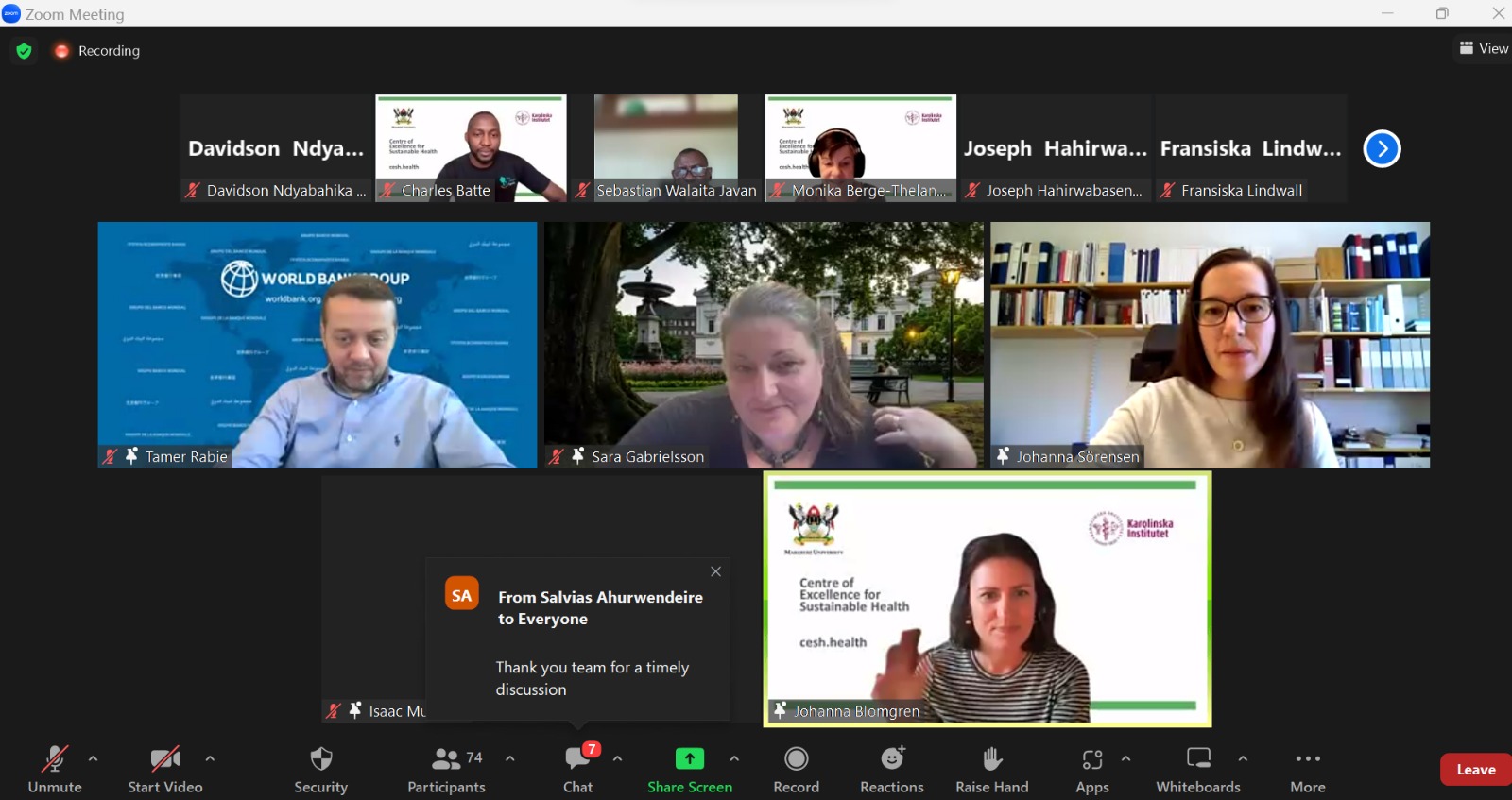
By Davidson Ndyabahika, Johanna Blomgren and Julius T. Mugaga
Experts have urged urgent action to mitigate the health risks of climate change. The 2023 global conversation, on Climate Change and Health highlighted the need for transformational action in every sector to protect people’s health from climate change.
Held on September 5, 2023 the virtual seminar, organized by the Centre of Excellence for Sustainable Health (CESH), a collaboration between Makerere University and the Karolinska Institutet that aims to increase capacity and spur action to advance the agenda for sustainable health drew over 230 attendees from all over the world. It placed emphasis on mitigating the effects of extreme weather, such flooding.
In its 2023 report, the Intergovernmental Panel on Climate Change (IPCC) notes that global terrestrial, freshwater, and ocean ecosystems have already been affected by climate change, along with the associated losses and costs. It predicts that heavy rainfall and flooding events are expected to worsen and occur more frequently in the majority of regions of Africa, Asia, North America, and Europe by 1.5°C global warming (high confidence).
The 2023 IPCC report identifies barriers that prevent people and society from implementing climate-resilient behaviors. Financial limitations, conflicts with the SDGs, inequalities, institutional, economic, and social hurdles, as well as dispersed strategies, are a few of these. The panel equally agree that if global warming exceeds 1.5 °C and the SDGs are not adequately progressed, chances for climate-resilient development would be considerably more limited.
Now, during the seminar, the panel, by consensus agreed that climate change is critical citing that such conversations on critical factors in relation to the climate and health crisis are not only timely but necessary.
Climate change impacts the social determinants of health, which include excellent health and wellbeing, by causing decreased food output, low fishing yields, flooding, and infrastructure damage, according to Daniel Helldén, a PhD student at KI Department of Global Public Health.
“The future emission scenarios are dire. What is becoming more and more clear is that climate change is a generational issue. Children born today will continue to bear the biggest burden of climate change impact,” said Helldén.
Dr. Mugume Isaac Amooti, the Director of Weather Forecasting Services at the Uganda National Meteorological Authority (UNMA), emphasized the importance of considering both long-term averages and unprecedented weather events driven by climate change. These events are thought extreme only when they exceed past records. He noted for instance that in Uganda; “The widespread flooding brought on by heavy and frequent precipitation is what we are seeing in Uganda, particularly in the cities. However, we are witnessing heat waves and cold waves at different times of the year.”
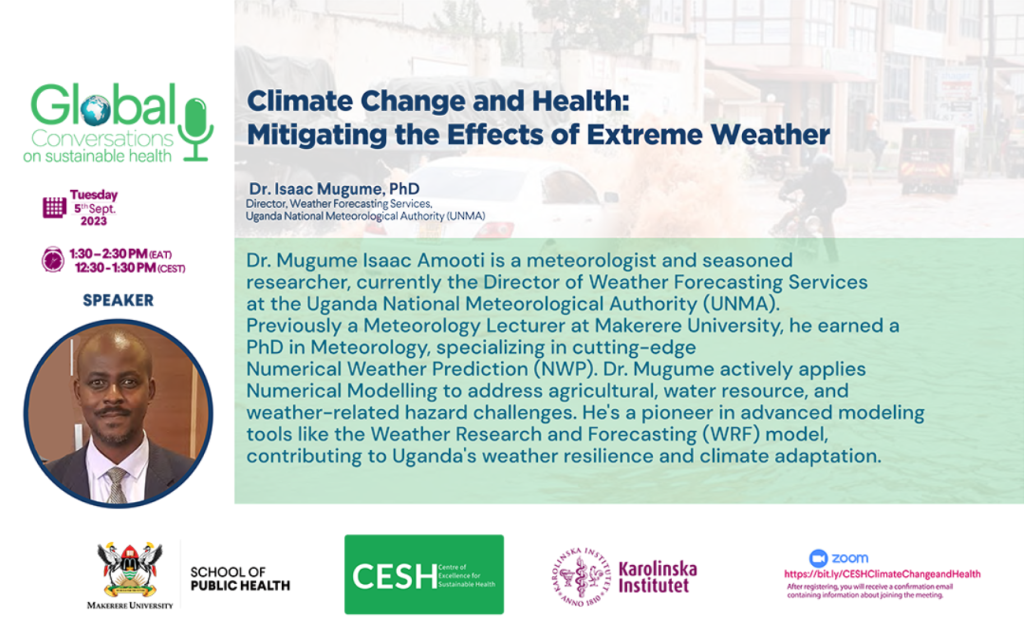
Although there isn’t a clear pattern in Sweden’s precipitation, Dr. Johanna Sörensen of Lund University in Sweden said that forecasts suggest that rainfall may increase by the end of the century. Given the flooding problems that already present, this, she says is something to worry about. “Flooding is increasing not only because of climate change but also even more that we construct the cities more densely and we construct buildings and industries on lowly areas that we used not to do in the past which is of course not a good idea.”

Dr. Tamer Rabie, a lead health specialist at the World Bank Group, notes that risks are amplified by climate change, which therefore has an intensified negative impact. He points out, for instance, that in order to comprehend how climate change and changes in temperature and precipitation patterns will affect health, it is critical to view climate change as a risk multiplier.
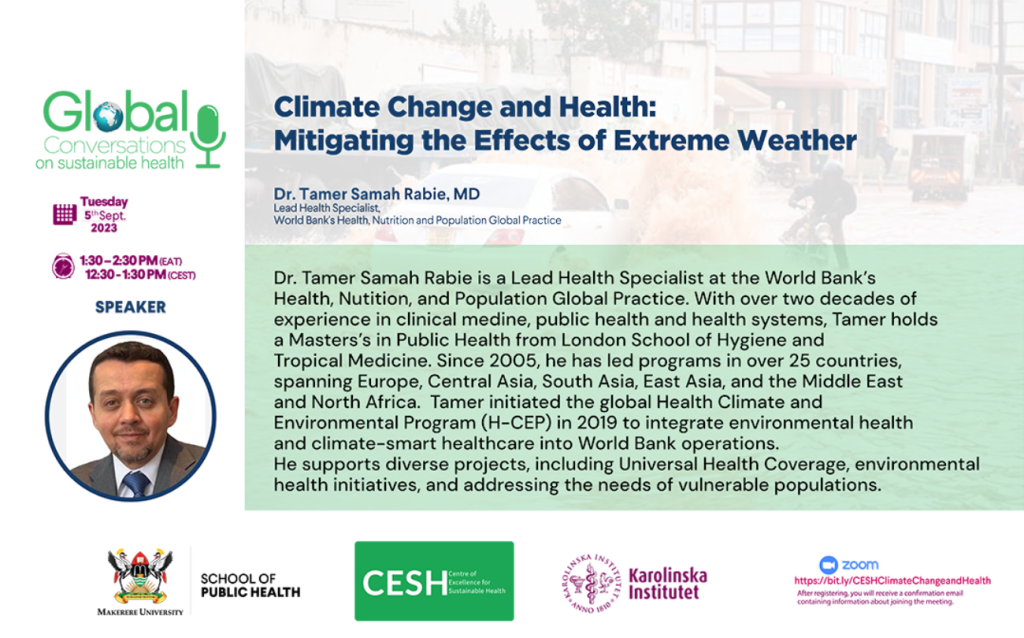
Dr. Tamer, also the architect of the World Bank’s global Health-Climate and Environment Program (H-CEP), underscored three pathways through which climate change impacts health: direct effects, indirect effects, and those mediated by ecosystems. Some of the direct pathways include issues like increased temperatures likely to lead to heat waves, heat-related illnesses, worsened non-communicable diseases, and increase in the risk of events like traumatic injuries.
According to Dr. Tamer, ecosystem-mediated risks include vector-borne diseases (like Malaria and Dengue), foodborne illnesses, and waterborne diseases (like Cholera). These risks are closely tied to how health outcomes are influenced by the ecosystem. Additionally, indirect health impacts encompass mental health due to population displacements, as well as malnutrition resulting from shifts in food production and overall food systems.
“We have done estimates in the World Bank that show that extreme weather events and climate change will lead to pushing nearly 132 million people into extreme poverty by 2030. If you look at the health impacts within those figures and the main drivers, we are seeing that nearly 44 million out of those 132 will be pushed into extreme poverty by 2030 if we don’t take any action today,” Dr. Tamer.
According to Dr. Tamer, the World Bank has conducted climate and health vulnerability assessments specifically looking at the cost of inaction moving into the 2030s and 2050s using information that relates to malaria, dengue, diarrhea, stunting in children, heat related illnesses, floods, among others.
“What we are seeing is that on average, countries will be losing anywhere between 1-5% of their GDP as a result of not really addressing the climate crisis, not being able to address these impacts that we are talking about, and obviously not investing enough into the health systems to be able to be more resilient,” Dr. Tamer noted during the webinar.
According to Dr. Sara Gabrielsson, an Associate Senior Lecturer in Sustainability Science at Lund University’s Centre for Sustainability Studies (LUCSUS), addressing immediate health risks involves containing flooding, which is just one aspect of climate change-related challenges like sea level rise and drought.
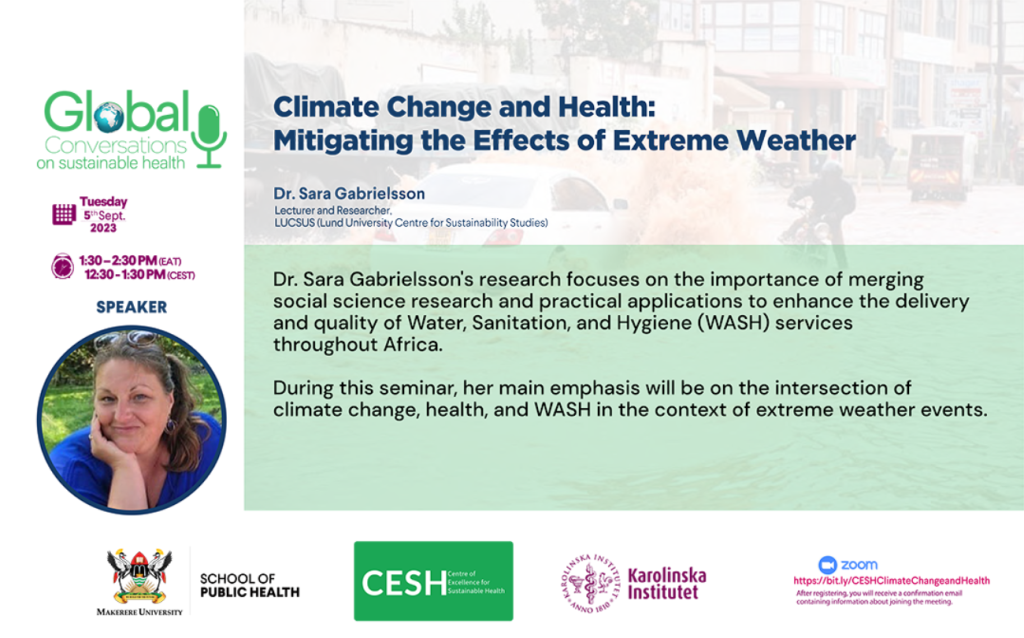
She highlights the connection between various deadly diseases like dengue, typhoid, trachoma, and cholera among others to this issue. During a crisis like flooding, treatment for these diseases she notes often takes a backseat due to the overwhelming health burdens that arise.
“There is death from drowning or direct injury from debris in these very storm surges, but then we also have the issue of just water sitting, waiting in water for longer periods, leading to lots of infections, urine-tract infections, vaginal infections, skin diseases, hypothermia, lots of those kinds of things, but also vector-borne diseases, and especially malaria, which is, of course, one big thing here,” Dr. Gabrielsson opines.
She adds that flooding brings problems like contaminated drinking water, leading to chronic diarrhea and malnutrition. Additionally, damaged sanitation facilities force people into open defecation, exposing them to harmful bacteria and further risk of chronic diarrhea.
“These immediate health risks are just the beginning. Moving into long-term risks, flooding severely impacts the availability of clean water for basic hygiene. As we’ve learned from COVID, hygiene is paramount for health. Insufficient handwashing and personal hygiene can breed disease. We need proper hygiene for preparing food, tending to babies, managing menstrual health, and more. Without it, there’s increased exposure to harmful bacteria, compounded by the use of inadequate sanitation systems, resulting in outbreaks of various diseases,” observed Gabrielsson.
Way forward
Dr. Sörensen, from a Swedish standpoint, proposes proactive steps to mitigate flooding. These include slowing down water flow, discouraging construction in flood-prone zones, and avoiding building in areas prone to heavy rain. She points out that in cities like Mumbai and Gothenburg, there has been a concerning trend of construction in flood-prone regions. Dr. Sörensen emphasizes the importance of adapting solutions for creating greener, more sustainable cities. “In China, they call it a sponge city. It’s like a sponge—you fill it up with water during rainfall and then use it later for various purposes. Utilizing vegetation and water storage helps retain water and slow down its flow in urban areas. Green spaces in cities are crucial for health, well-being, and providing shade, especially during heatwaves,” she says.
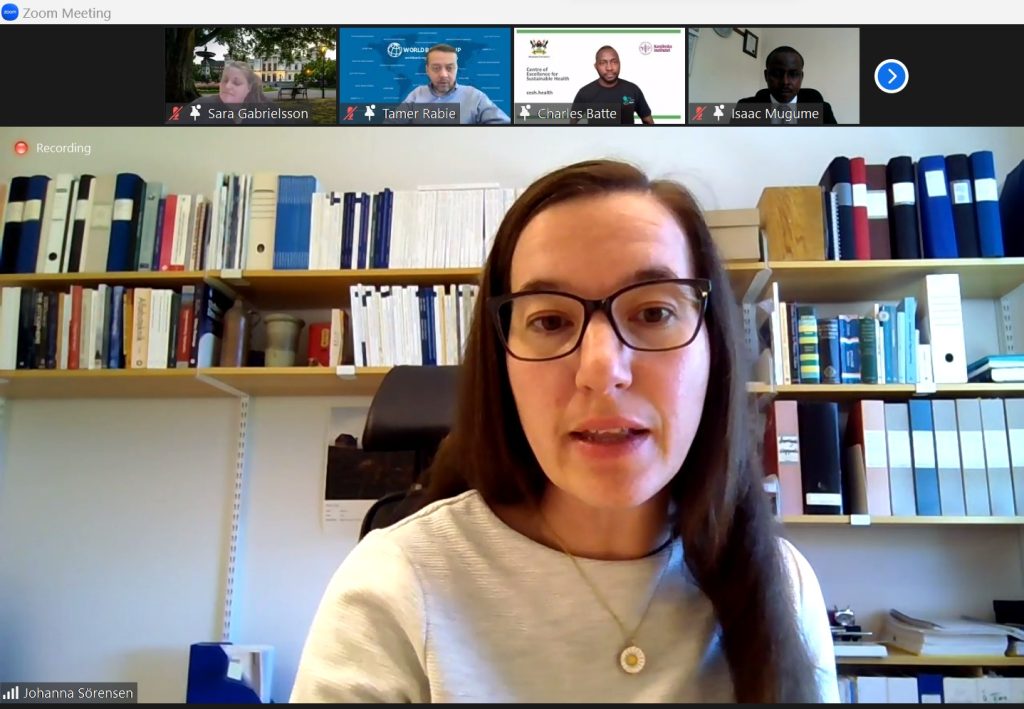
In Uganda, Dr. Mugume notes that the government has invested in weather monitoring infrastructure, including the three weather radars, which are strategically spread across the country to enable UNMA to monitor weather at any part of the country.
“With this technology, we can now offer more precise and timely services, ensuring our communities respond effectively. Weather and climate forecasts range from hourly to seasonal projections. Shorter forecasts tend to be more accurate, although longer ones still fall within manageable limits. For instance, our seasonal forecast accuracy in Uganda is at 90%, aligning with National Development Plan 3. We collaborate with development partners to fine-tune these forecasts.”
For Dr. Gabrielsson, preparedness is key, especially for the 2.2 billion people worldwide relying on sanitation systems, many of whom live in rapidly urbanizing areas and unplanned settlements.
Unfortunately, these systems often lack proper management, leading to health risks. In urban settings, she says, the spread of sludge from these systems can have widespread health implications. To address this, there’s a pressing need to prioritize climate-resilient sanitation systems. Historically, the sanitation sector has been under-prioritized, resulting in insufficient funding and political attention. Without a one-size-fits-all solution due to diverse living habits, cultural considerations become paramount. A gender-responsive approach is crucial, as women are primarily responsible for WASH (Water, Sanitation, and Hygiene) practices.

“It involves recognizing the unique needs of different groups, such as refugees, the elderly, disabled individuals, children, and menstruating individuals. Climate-resilient wash infrastructure requires community responsibility, government policy, and financial support. For instance, in flood-prone areas like the Amazon Basin, sanitation facilities are designed to align with local livelihoods, incorporating features like composting latrines that produce manure for farming and collecting rainwater for handwashing. This approach ensures environmental safety and sustainable practices,” she observes.
Dr. Gabrielsson emphasizes the importance of cultural acceptance in encouraging people’s dedication to upholding basic sanitation and hygiene practices, particularly in the face of flooding. “Another example I presented is a UNICEF-supported toilet in Bangladesh. It’s elevated with precast concrete rings to prevent flooding, sealed with concrete mortar for contamination prevention, and reinforced to withstand heavy rain and wind. This design was developed in close consultation with local communities, ensuring cultural acceptance and affordability. The goal is to create facilities that people actually want to use, which is why it’s crucial to integrate natural and social sciences for effective solutions.”
The World Bank has substantially supported action on climate change, including both adaptation and mitigation initiatives. Dr. Tamer says over $2.2 billion has been set aside as of today for climate-related health interventions, especially in South Asia and sub-Saharan Africa. Significant assistance has also been given to assist tiny island states in managing the effects of climate change, particularly extreme events.
In Yemen, the World Bank has sponsored efforts to put in place electronic early warning systems for real-time health data and policy response due to outbreaks of diseases including cholera and malaria. In Madagascar, the World Bank has funded work combining climate and nutrition programming. The World Bank worked with the government of Ghana to create long-lasting vaccine delivery networks.
You may like
-


EfD Uganda Marks 2025 Milestones, Sets Strategic Path for 2025–2029
-


Makerere University CoBAMS Staff celebrate 2025 achievements
-


Makerere University and Tsinghua University Launch Landmark China–Uganda Joint Laboratory on Natural Disaster Monitoring and Early Warning
-


Facilitating Access and Participation through Higher Education Access Programmes and Connected Education for Students with Refugee Backgrounds: A Global South Delphi Study
-


VC Flags off 220 Strong Contingent to 20th AUUS Games
-
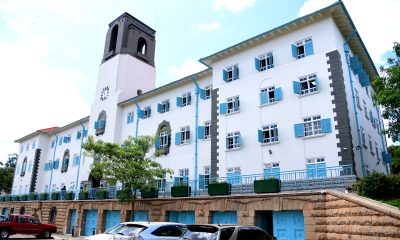

US$ 162m KEXIM Loan Approval Timely for Makerere University
Health
Makerere University and Tsinghua University Launch Landmark China–Uganda Joint Laboratory on Natural Disaster Monitoring and Early Warning
Published
1 week agoon
December 19, 2025
Makerere University has taken a decisive step in strengthening Uganda’s and Africa’s capacity for public safety, disaster preparedness, and climate resilience with the official launch of the China–Uganda Belt and Road Joint Laboratory on Natural Disaster Monitoring and Early Warning, a flagship collaboration with Tsinghua University of China.
Launched during the Makerere University–Tsinghua University Symposium on Public Safety and Natural Disaster Management, the Joint Laboratory positions Makerere as a continental hub for cutting-edge research, innovation, and policy-relevant solutions in disaster risk reduction, early warning systems, and emergency response. The Laboratory will be hosted by Makerere University and is the only facility of its kind in Africa under this cooperation framework, underscoring its regional and global significance.
A Strategic Partnership Rooted in Research, Policy, and Practice
In his opening remarks, Prof. Barnabas Nawangwe, Vice-Chancellor of Makerere University and Ugandan Co-Director of the Joint Laboratory, traced the origins of the partnership to 2018, when a Makerere delegation visited Tsinghua University and the Hefei Institute for Public Safety Research. He recalled being deeply impressed by China’s advanced capacity in public safety research, disaster monitoring, and emergency management capabilities that directly respond to Uganda’s growing exposure to floods, landslides, epidemics, and other hazards.
The Vice-Chancellor noted that the successful establishment of the Joint Laboratory followed a competitive grant process under China’s Belt and Road Initiative, supported by the Government of Uganda and regional partners, including Nigeria and Côte d’Ivoire. He emphasized that the Laboratory aligns squarely with Makerere’s strategic ambition to become a research-led and research-intensive university, while also advancing its internationalisation agenda.

“This Laboratory will significantly enhance Makerere University’s ability to generate evidence-based research that directly informs government policy and public safety interventions. It will serve not only Uganda, but Africa at large,” Prof. Nawangwe said.
He further underscored the Laboratory’s national importance, noting that similar facilities in China are regarded as national-level laboratories, entrusted with supporting government decision-making and national resilience. Relevant Ugandan institutions, including the Office of the Prime Minister (OPM), UPDF, Uganda Police, Ministry of Health, and humanitarian actors, are expected to actively participate in the Laboratory’s work.
Tsinghua University: Advancing Science Diplomacy and South–South Cooperation
Speaking on behalf of Tsinghua University, Prof. Yuan Hongyong, Dean of the Hefei Institute for Public Safety Research and Chinese Co-Director of the Joint Laboratory, described the initiative as both a scientific milestone and a powerful demonstration of South–South cooperation.
He emphasized that natural disasters transcend national borders and demand collective, science-driven responses. By combining Tsinghua’s technological expertise, including satellite monitoring, AI-driven analytics, and integrated early warning systems, with Makerere’s deep regional knowledge and policy engagement, the Joint Laboratory provides a robust platform for innovation, applied research, and practical solutions tailored to African contexts.

The Laboratory will function not only as a research centre, but also as an operational platform for natural hazard monitoring, early warning, risk assessment, and capacity building, supporting Uganda and the wider African region in building more resilient communities.
Government of Uganda: Research as a Pillar of National Resilience
Representing the Office of the Prime Minister, Mr Frederick Edward Walugemba, reaffirmed the government’s strong support for the Joint Laboratory, recognizing research as a cornerstone of effective public safety and disaster management. The OPM highlighted its constitutional mandate to coordinate disaster preparedness and response through institutions such as the National Emergency Coordination and Operations Centre (NECOC).
He mentioned that the Office of the Prime Minister is committed to working closely with Makerere University and its partners, underscoring the importance of multi-agency collaboration, robust data systems, and timely policy advisories to address the complex, multidimensional nature of public safety challenges.
China–Uganda Relations and the Role of Science Diplomacy
Mr. WANG Jianxun, Commercial Counsellor of the Embassy of the People’s Republic of China in Uganda, lauded the Joint Laboratory as a concrete outcome of the growing China–Uganda Comprehensive Strategic Partnership. He emphasized that the collaboration reflects China’s commitment to knowledge sharing, technology transfer, and people-centred development, particularly in areas such as climate adaptation, disaster risk reduction, and sustainable development.
He also highlighted the Belt and Road Initiative as a framework that extends beyond infrastructure to include scientific cooperation, academic exchange, and innovation-driven development, with the Joint Laboratory standing as a model of how universities can advance diplomacy through science.
Makerere’s Multidisciplinary Strength at the Core
In his concluding remarks, Prof. Nawangwe reaffirmed Makerere University’s readiness to operationalize the Laboratory through a multidisciplinary research team spanning public health, geography, engineering, computing, artificial intelligence, social sciences, and the built environment.
He stressed that effective disaster management must integrate technology, human behaviour, governance, and community engagement, noting the importance of sociological insights in addressing risk perception and public compliance during disasters. Makerere will also engage emerging universities and regional partners to ensure the Laboratory’s benefits are widely shared.

The Vice-Chancellor also commissioned an interim, multidisciplinary coordination committee to operationalise the Joint Laboratory, drawing expertise from health, climate science, engineering, artificial intelligence, social sciences, and government agencies.
Hon. John Chrysostom Muyingo Officially Launches the Laboratory
The Joint Laboratory was officially launched by the Honourable John Chrysostom Muyingo, Minister of State for Higher Education, who applauded Makerere University and Tsinghua University for securing the prestigious grant and advancing Uganda’s science and research agenda.

Hon. Muyingo reaffirmed the Government’s commitment to supporting research that informs national development, public safety, and disaster preparedness. He urged Ugandan researchers to fully leverage the partnership to learn from China’s experience in transforming research into actionable solutions for society.
“This Laboratory is a clear demonstration of how strategic international partnerships can strengthen national capacity, inform policy, and protect lives,” the Minister said, as he formally declared the symposium and laboratory launch open.
Positioning Makerere as a Regional Centre of Excellence
Makerere University already plays a critical role in public safety, disaster preparedness, and early warning through a range of research, training, and operational partnerships. Through the School of Public Health (MakSPH) and the Infectious Diseases Institute (IDI), the University has led national and regional initiatives in epidemic preparedness, emergency response, and early warning, including Field Epidemiology Training, risk prediction modelling, and multi-hazard risk assessments that inform district and national preparedness planning. A national assessment of 716 health facilities conducted by MakSPH revealed widespread exposure to climate-related hazards and systemic preparedness gaps, directly informing the Ministry of Health’s Climate and Health National Adaptation Plan (H-NAP 2025–2030)
Makerere has also been at the forefront of disaster risk reduction innovation and community resilience through the Resilient Africa Network (RAN), which has supported scalable, evidence-based solutions such as EpiTent, a rapidly deployable emergency health facility; RootIO, a community-based radio communication platform used for risk communication and early warning; and RIAP Horn of Africa, which advances climate-resilient water harvesting technologies for drought-prone pastoralist communities.

Earlier, the University led the USAID-funded PeriPeri U project (2014–2019) and a disaster management collaboration with Tulane University, strengthening applied research, training, and early warning systems across Africa, efforts that laid the foundation for RAN and Makerere’s current disaster resilience agenda.
In collaboration with government and international partners, Makerere has supported the strengthening of Emergency Operations Centres, including the development of Regional Emergency Operations Centre (REOC) dashboards to improve real-time coordination and situational awareness. IDI has further contributed to epidemic intelligence and early warning, supporting districts to update WHO STAR-based risk calendars, strengthen sub-national preparedness, and enhance real-time decision-making during outbreaks. Makerere teams have also been deployed regionally to support Marburg and Mpox outbreak responses in Rwanda and the DRC, while advancing outbreak modelling as an early warning tool for high-consequence infectious diseases.
Complementing these efforts, the Department of Geography, Geo-Informatics and Climatic Sciences conducts transdisciplinary research on floods, landslides, droughts, soil erosion, and land-use change, using geospatial analysis, earth observation, modelling, and participatory methods to translate complex data into actionable early warning and risk information for policymakers and communities. These ongoing initiatives collectively demonstrate Makerere University’s established capacity in public safety, disaster preparedness, and early warning, providing a strong operational and scientific foundation for the China–Uganda Belt and Road Joint Laboratory.
With strong backing from the Governments of Uganda and China, as well as leading international partners, the China–Uganda Belt and Road Joint Laboratory on Natural Disaster Monitoring and Early Warning is poised to become a regional centre of excellence for disaster risk reduction research, training, and innovation.
The Laboratory will contribute to improved early warning systems, faster emergency response, stronger policy coordination, and enhanced scientific capacity, cementing Makerere University’s role at the forefront of addressing some of the most pressing public safety challenges facing Uganda, Africa, and the global community.
Caroline Kainomugisha is the Communications Officer, Advancement Office Makerere University.
Health
Makerere University Explores Strategic Partnership with Tsinghua University in Safety Science, Disaster Resilience and Public Health
Published
2 weeks agoon
December 16, 2025
Makerere University has taken a significant step toward strengthening global research collaboration following a high-level meeting between Vice Chancellor Prof. Barnabas Nawangwe and a delegation from Tsinghua University’s Hefei Institute for Public Safety Research, one of China’s leading centres of excellence in disaster prevention, public safety, and emergency management. The engagement marked a renewed commitment to advancing scientific cooperation between the two institutions, particularly in addressing complex environmental and public health challenges that continue to shape national and global development.
A Partnership Anchored in Shared Challenges and Global Priorities
In his remarks, Prof. Nawangwe emphasized that the concept of comprehensive public safety, spanning natural disasters, epidemics, infrastructure failures, and social risks, is increasingly relevant to all colleges and disciplines at Makerere. Uganda’s experience with epidemics such as Ebola, cholera, and COVID-19; frequent landslides in mountainous regions; flooding events; and rising traffic-related incidents place the University in a unique position to contribute applied research, community-based insights, and local knowledge to a global scientific dialogue.
He noted that the Tsinghua presentation revealed new areas of alignment, particularly in epidemic modelling, early-warning systems, and integrated emergency management, areas where Makerere’s public health scientists, medical researchers, and social scientists have extensive expertise.
“This collaboration offers meaningful opportunities for nearly every college at Makerere,” he noted. “Public safety touches the environment, public health, engineering, social sciences, ICT, humanities, and urban planning. The challenges we face as a country make this partnership both timely and essential.” Prof. Barnabas Nawangwe noted.
Tsinghua University: A Global Leader in Comprehensive Public Safety.
The delegation from Tsinghua University outlined China’s national investment in Public safety over the past two decades, an effort driven by the recognition that life and security are the foundation of sustainable development. Tsinghua’s Hefei Institute for Public Safety Research has developed nationally recognised research platforms and large-scale simulation facilities dedicated to Natural disaster modelling (earthquakes, landslides, floods, typhoons, Infrastructure and urban systems safety, Public health emergencies and epidemic preparedness, Early-warning, monitoring, and emergency communication, Traffic and transportation safety, Post-disaster reconstruction and resilience planning.

Their systems currently support over 100 provincial and municipal emergency management centres in China, underscoring their global leadership in practical, scalable solutions for disaster risk management. The delegation reaffirmed that Uganda’s lived experience with multiple hazards presents opportunities for meaningful knowledge exchange. They expressed particular interest in learning from Makerere’s work on epidemic response, community health systems, and the social dimensions of disaster management.
Emerging Areas of Partnership
The meeting identified several promising pathways for long-term collaboration:
1. Joint Research in Disaster Risk Reduction and Climate-Related Hazards
Both institutions expressed readiness to co-develop research projects on landslides, floods, urban resilience, and multi-hazard modelling, drawing on Tsinghua’s advanced simulation technologies and Makerere’s environmental expertise and geographic field realities.
2. Public Health Emergency Preparedness and Epidemic Response
Makerere’s renowned public health schools and research centres will collaborate with Tsinghua on epidemic prediction, early-warning systems, and integrated preparedness frameworks, leveraging Uganda’s decades of experience managing high-risk disease outbreaks.

3. Infrastructure and Urban Safety, Including Traffic Systems
With Uganda experiencing rapid urbanisation and high rates of motorcycle-related road incidents, Tsinghua shared insights from China’s own transformation, including infrastructure redesign, transport modelling, and public transit innovations. Collaborative work in this area would support city planning and road safety interventions in Kampala and other urban centres.
4. Academic Exchange and Capacity Building
Both sides expressed interest in student exchanges, staff mobility, co-supervision of postgraduate research, and specialised training programmes hosted at Tsinghua’s world-class safety research facilities.
5. Development of a Joint Public Safety Laboratory at Makerere
The institutions are exploring the establishment of a collaborative safety research platform in Uganda. This initiative could serve as a regional hub for innovation in emergency management, environmental safety, and technology-driven risk assessment.
Towards a Long-Term, Impactful Collaboration
The meeting concluded with a shared commitment to develop a structured partnership framework in the coming months, supported by both universities and aligned with Uganda–China cooperation priorities. Both teams acknowledged that the partnership must yield tangible results that enhance community resilience, bolster national preparedness systems, and foster scientific capacity for future generations.
Prof. Nawangwe commended Tsinghua University for its willingness to co-invest in research and capacity building, noting that such collaborations position Makerere not only as a leading research institution in Africa but as an active contributor to global scientific progress.

“This partnership has the potential to transform our understanding of the science of public safety to deliver solutions that safeguard lives.” Prof. Barnabas Nawangwe noted.
“It aligns perfectly with Makerere’s mission to be a research-led, innovation-driven university responding to the world’s most urgent challenges.” He added.
As part of this strategic partnership engagement, Makerere University will, on Wednesday, 17th December, co-host the Makerere University–Tsinghua University Symposium on Public Safety and Natural Disaster Management. The symposium will run from 8:00 AM to 2:00 PM in the University Main Hall, Main Building.
This symposium represents a deepening of collaboration not only between Makerere University and Tsinghua University, but also a broader strategic partnership between Uganda and the People’s Republic of China.
During the event, H.E. Zhang Lizhong, Ambassador of the People’s Republic of China to Uganda, together with the State Minister for Higher Education, Government of Uganda, will officially launch the China–Uganda Belt and Road Joint Laboratory on Natural Disaster Monitoring and Early Warning. The Laboratory will be hosted at Makerere University, positioning the University to play a central role in strengthening Uganda’s and the region’s capacity for natural disaster preparedness, public safety, and emergency management research.
Caroline Kainomugisha is the Communications Officer, Advancement Office, Makerere University.
Health
Three Years of Impact: Makerere University Health User Committee Presents Status Report
Published
2 weeks agoon
December 12, 2025By
Eve Nakyanzi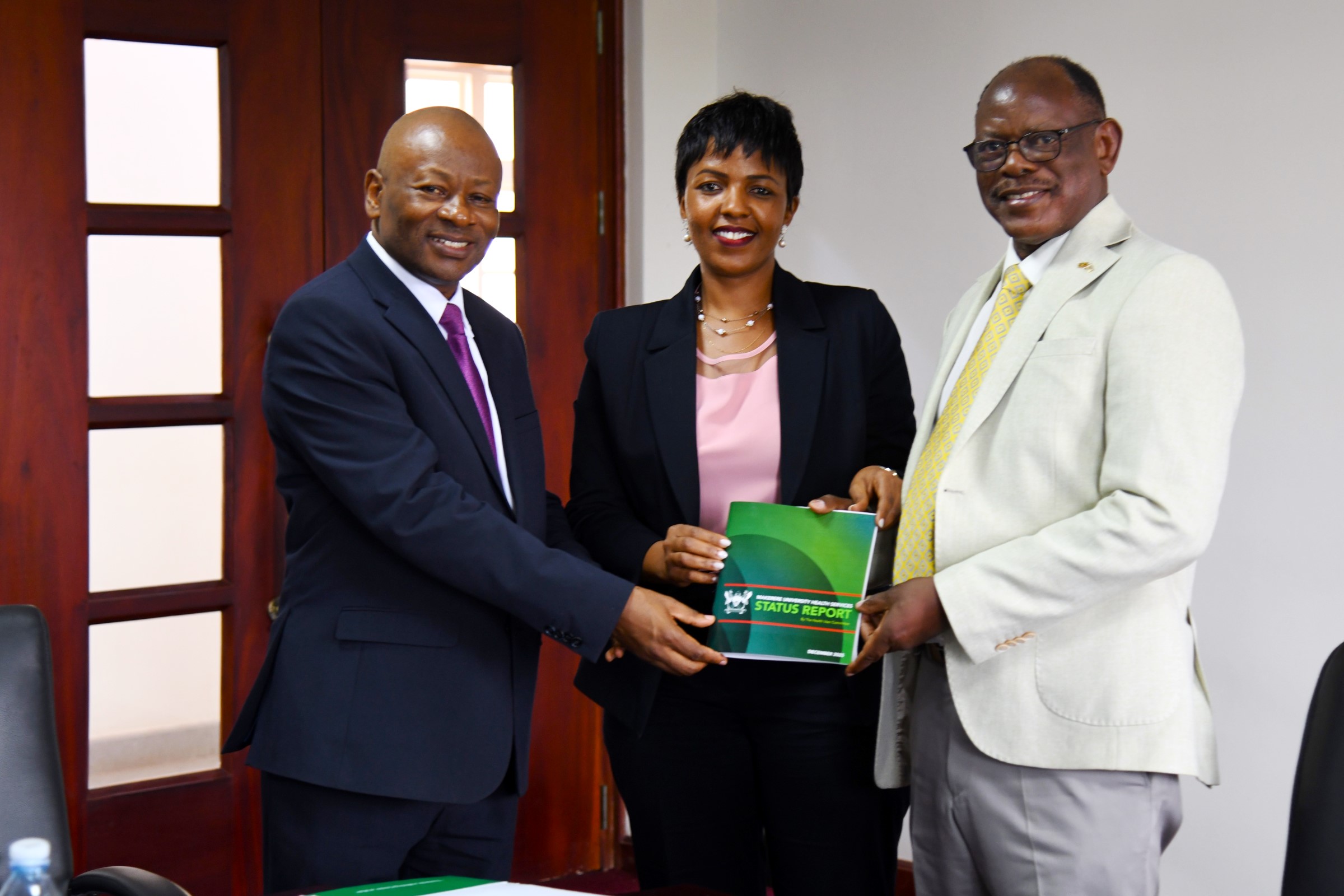
Makerere University on 11th November 2025 marked a significant milestone as the Health User Committee (Mak-HUC)—established by the Vice Chancellor in 2022 as part of his strategic mandate to strengthen and oversee the University’s health service delivery—formally handed over its three-year report. The event highlighted the committee’s achievements in guiding, monitoring, and improving Makerere University Health Services, presenting a record of progress that has reshaped confidence, strengthened systems, and expanded care for staff and students.
A Call for Integrated and Sustainable Health Services
The Vice Chancellor Prof. Barnabas Nawangwe emphasized the need for a more integrated, efficient, and sustainable approach to delivering health services for Makerere University staff and students. He noted that while the University does not receive supplies from the National Medical Stores system, its community remains entitled to quality care, urging renewed consideration of how essential services—such as drug access, surgical limits, and special medical cases—can be better supported. He highlighted the importance of practical costing models, especially for extending care to staff dependents, and called for flexibility in managing exceptional cases like complex surgeries or referrals abroad.
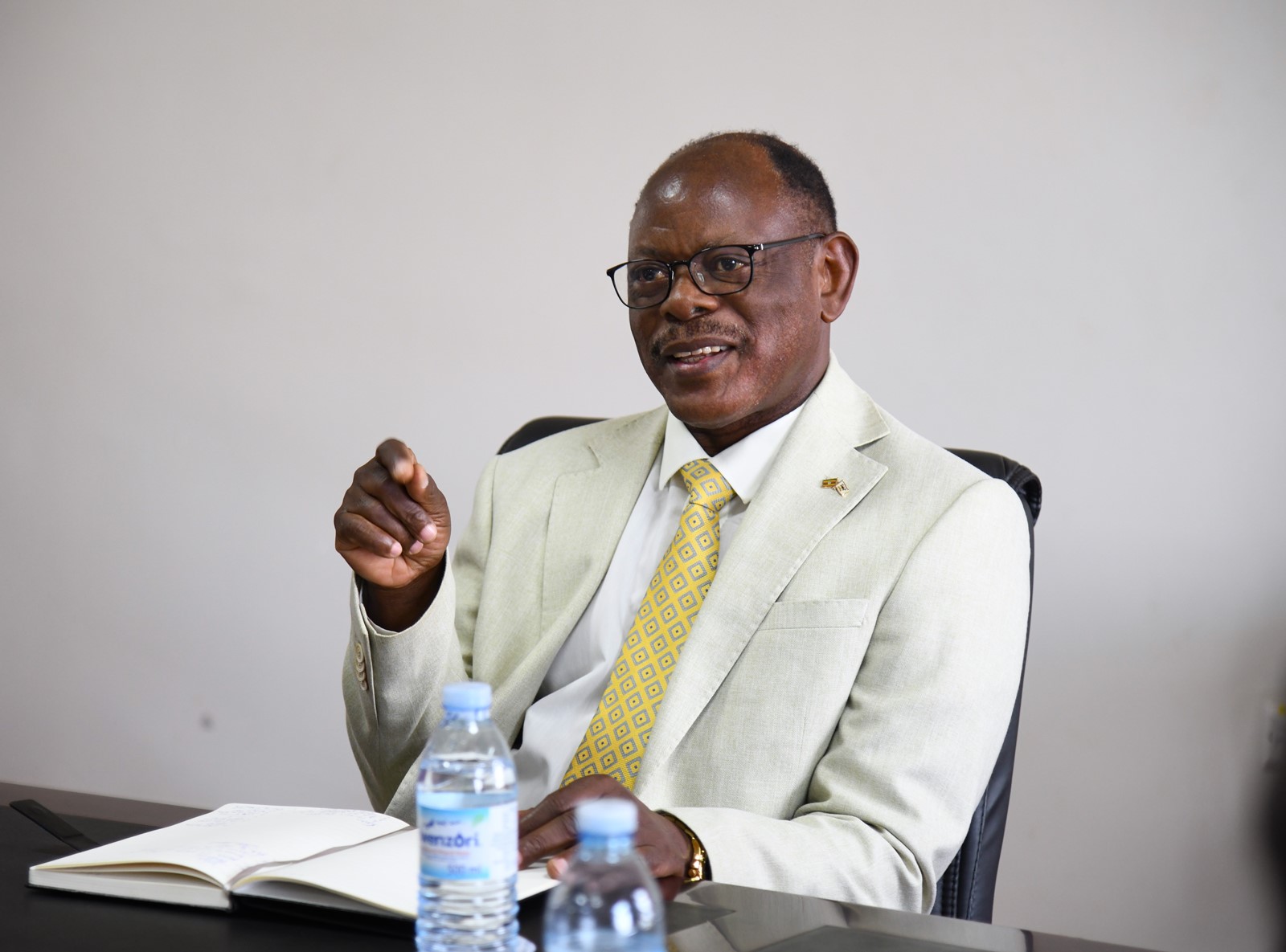
The Vice Chancellor also underscored the urgent need to modernize the University Hospital, proposing that Makerere begin incrementally establishing a teaching hospital using existing facilities and leveraging expertise of highly qualified consultants the College of Health Sciences (CHS). He reiterated that government budget ceilings remain a major constraint, but encouraged the committee to develop a concept that could be presented to Council and later supported through strategic engagement with the Ministry of Finance, Planning and Economic Development. Throughout his remarks, he applauded the Mak-HUC for its work and reaffirmed that even with the creation of a professional hospital board, the committee must remain central in representing service users.
Aligning Health Services with Sustainable Insurance Models
Prof. Bruce Kirenga the Principal College of Health Sciences responded by clarifying the committee’s efforts to align Makerere’s health services with real insurance models, including cost projections for covering additional family members and encouraging voluntary staff contributions where necessary. He acknowledged the complexity of expanding service coverage—especially in cases of chronic illness or high-cost procedures—but emphasized the committee’s commitment to cautious, sustainable planning. He confirmed that the College is working closely with the Hospital to improve services, attract specialists, and integrate students into the health system, a model that naturally draws academic staff into clinical roles without imposing unrealistic obligations.
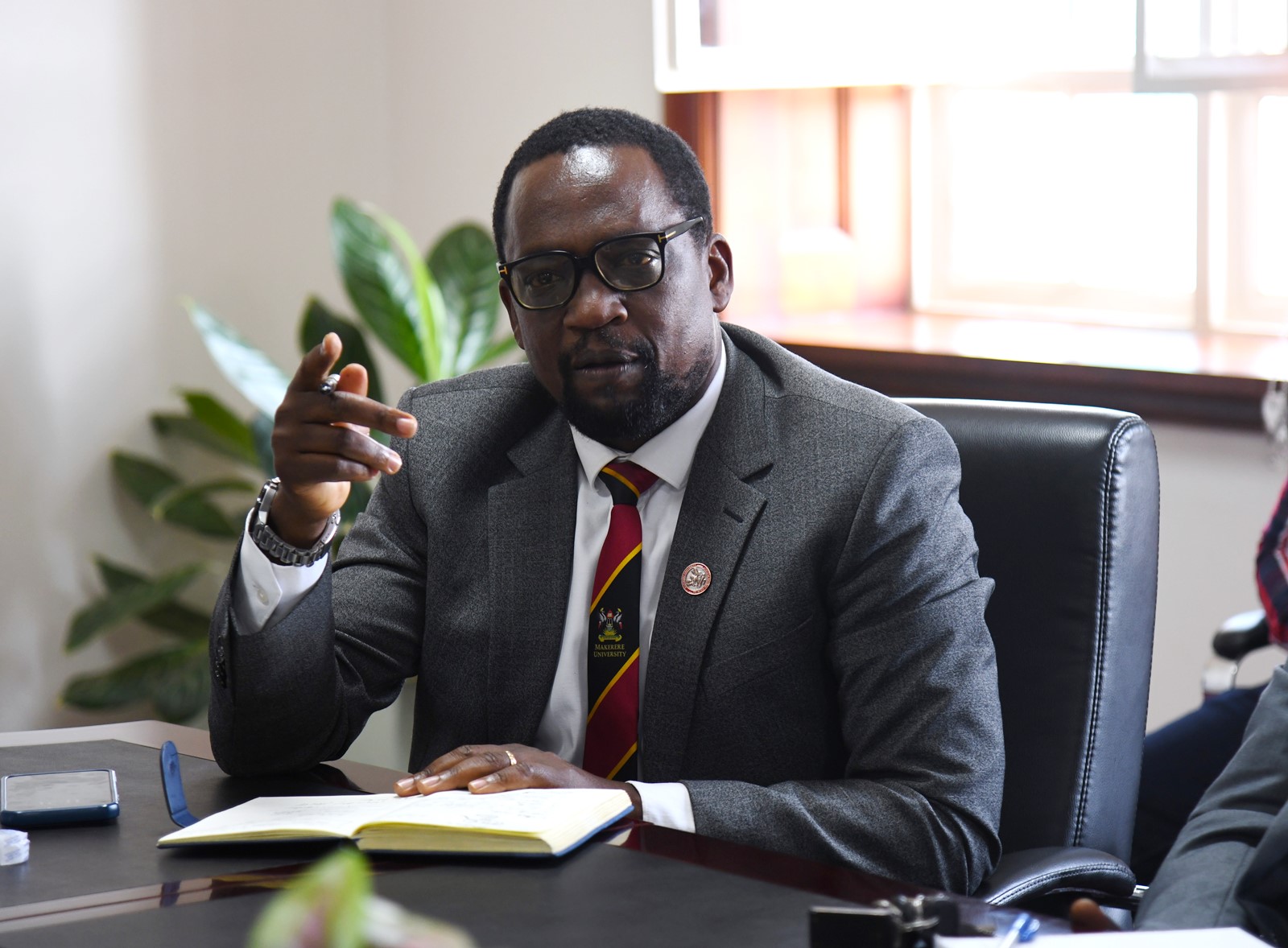
Prof. Kirenga also noted the College’s ongoing assessments of facility needs, including dialysis, ICU expansion, and equipment placement, stressing that the ultimate goal is a unified, well-structured health network across the University. He welcomed the Vice Chancellor’s support for transforming existing facilities into a teaching hospital and pledged to refine proposals that reflect both current realities and long-term institutional needs.
Committee Chair Reflects on Three-Year Achievements
Dr. Allen Kabagyenyi, Chair of Mak-HUC, reflected on the three-year journey with gratitude and pride, noting that the committee not only fulfilled its terms of reference but exceeded expectations. She highlighted major gains made under the Vice Chancellor’s support, including transforming the University Hospital into a self-accounting unit—an intervention that unlocked smoother financial management and accelerated service delivery. Dr. Kabagyenyi commended the strong collaboration with the Hospital administration, Human Resources Directorate, and other units, which ensured staffing stability even during institutional transitions.

She pointed to the expansion of referral partnerships—now totaling 29 health facilities nationwide—as a crucial achievement that guarantees continuity of care for staff and students wherever they are. She also emphasized the committee’s work in guiding policies for specialized treatment and cross-border care, strengthening fraud-prevention systems, and advancing digital transformation through an integrated health information system and the new Makerere University Health Services (MakHS) website. Dr. Kabagyenyi noted that these improvements have directly benefited staff and enhanced the overall quality of care, supported by close collaboration with the College of Health Sciences and access to some of the country’s best consultants. She concluded by underscoring the ongoing need for a comprehensive University Health Policy and expressed deep appreciation to the Vice Chancellor and University Management for their unwavering openness and support—attributes she credited for the committee’s success.
Highlights of Service Growth and Infrastructure Upgrades
The Chief, Makerere University Health Services, Prof. Josaphat Byamugisha, highlighted the significant progress achieved under the Health User Committee’s oversight, noting especially the steady rise in service utilization and renewed confidence among staff and students. He emphasized that trust in the University Hospital has grown organically—built not through advertising, but through improved patient experience, stronger systems, and word of mouth.

Prof. Byamugisha pointed to major achievements such as expanded Out-Patient Department (OPD) attendance, better student access to care, enhanced infrastructure including modernized theatres capable of complex procedures, and upgraded laboratories supported through framework agreements that ensure continuous equipment renewal. He noted that specialized clinics, increased inpatient capacity, and expanded referral networks have strengthened the Hospital’s reach and responsiveness. The Hospital is also taking on more research work and clinical training, partnering with units such as optometry, internal medicine, and the Clinical Trials Unit, with new collaborations—like the MasterCard Foundation—driving further growth.
He reaffirmed that the long-term vision of establishing a fully-fledged Makerere University Teaching Hospital is taking shape through coordinated efforts with the College of Health Sciences. Prof. Byamugisha credited the Vice Chancellor’s support for enabling these strides and expressed deep appreciation to all stakeholders contributing to the continued improvement of health services for the entire University community.
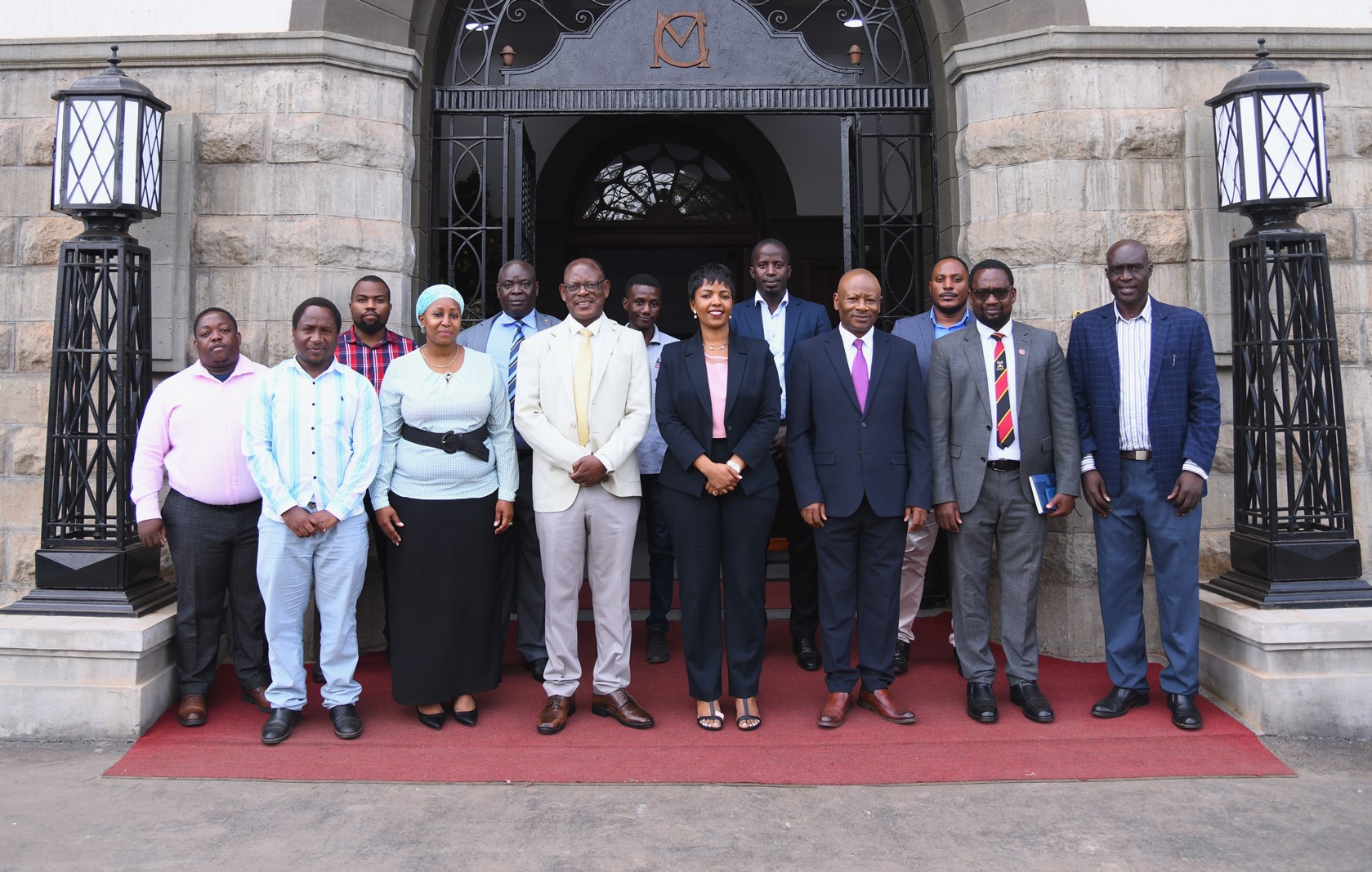
DICTS Unveils Modular Information System & Health Services Website
The Directorate for ICT Support (DICTS) presented the newly developed Makerere University Integrated Health Management Information System (MakIHMIS), designed around a modular system that streamlines all hospital processes. The platform integrates eight functional modules, including registration, triage, clinician workflows, inventory and medicines management, pharmacy dispensing, laboratory information management, user management, and linkages to both the Academic and Human Resource Management Information Systems ACMIS and e-HRMS respetively. Most of these modules are already active, enabling smooth patient registration, accurate record-keeping, real-time inventory tracking, and seamless access to student and staff data without duplication. Only two modules—land and insurance—remain under development before the system becomes fully end-to-end. The MakHS website on the other hand features information about hospital services, events, research activities, and staff profiles, offering both the university community and the public a centralized and efficient digital gateway to the hospital’s operations.
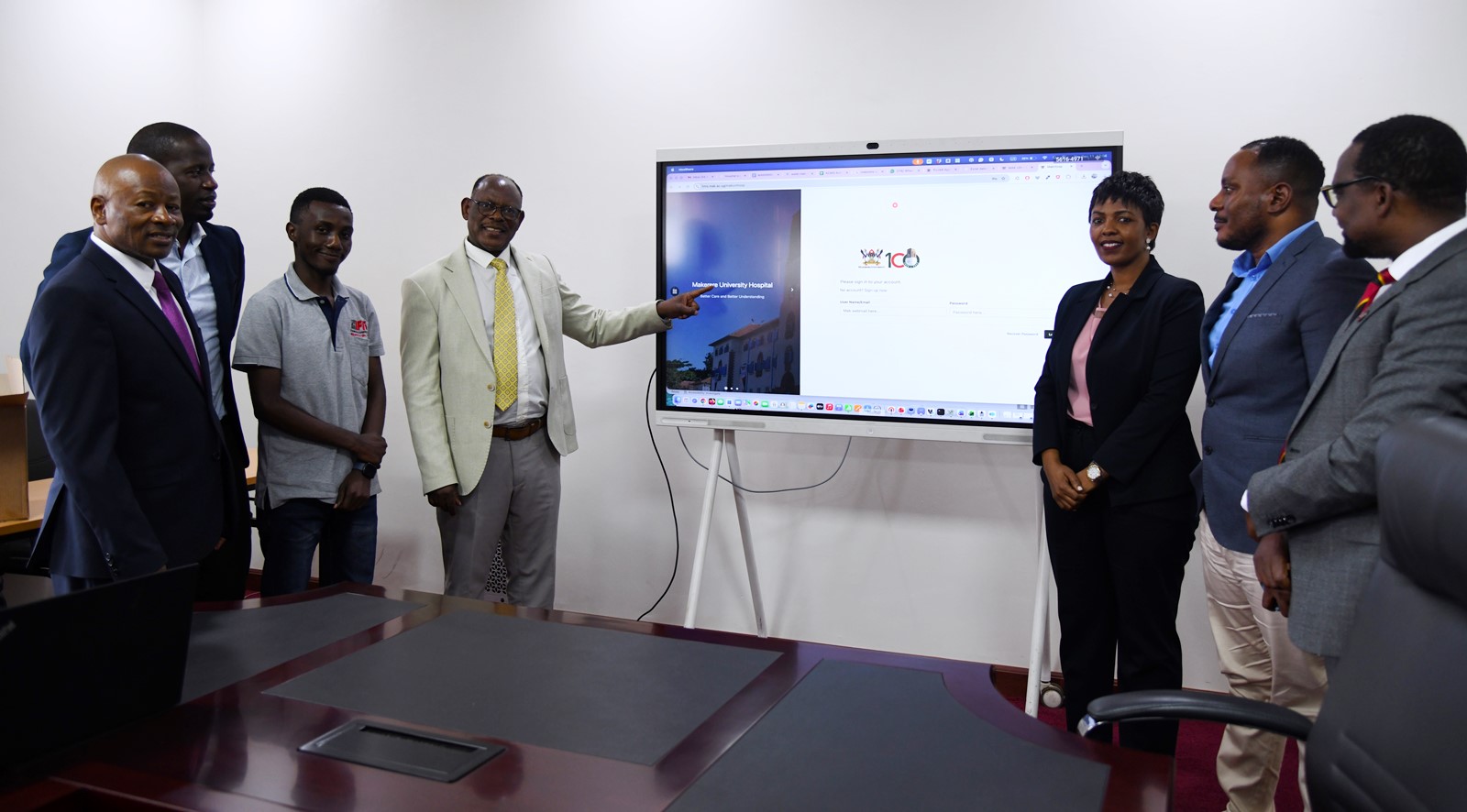
The term of the outgoing committee has officially concluded, and preparations are now underway for the incoming committee to assume its duties and continue advancing the work ahead.
Trending
-

 Research1 week ago
Research1 week agoMakerere University Launches Knowledge-Sharing Platform to Drive Innovation and Economic Growth
-

 General2 weeks ago
General2 weeks agoMakerere University Leaders Call for Excellence in Research and Supervision as Academic Staff and PhD Students Receive Certificates
-

 Health2 weeks ago
Health2 weeks agoMakerere University Explores Strategic Partnership with Tsinghua University in Safety Science, Disaster Resilience and Public Health
-

 Business & Management1 week ago
Business & Management1 week agoEfD Uganda Marks 2025 Milestones, Sets Strategic Path for 2025–2029
-

 Health1 week ago
Health1 week agoMakerere University and Tsinghua University Launch Landmark China–Uganda Joint Laboratory on Natural Disaster Monitoring and Early Warning
